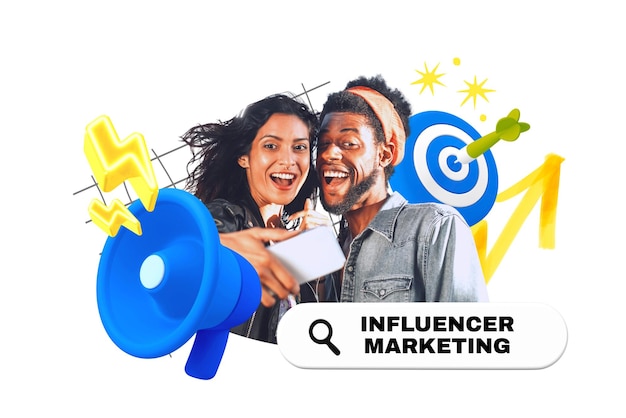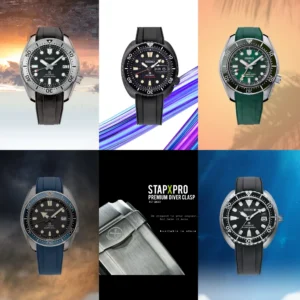Unleashing the Power of Social Media Influencer Marketing: Strategies, Trends, and Business Impact
In today’s digital-first world, traditional advertising methods are slowly losing their dominance. Instead, modern consumers are driven by authenticity, trust, and relatability—factors that traditional ads often fail to deliver. Enter social media influencer marketing, a game-changing strategy that leverages the reach, credibility, and engagement of online personalities to promote brands, products, or services to their loyal audiences. With the rise of platforms like Instagram, TikTok, YouTube, and LinkedIn, influencer marketing has evolved into a dynamic and indispensable tool for marketers worldwide.
What is Social Media Influencer Marketing?
Social media influencer marketing is a form of collaboration between brands and influencers—individuals who have built a dedicated following and established credibility in a specific niche. These influencers, ranging from celebrities to everyday content creators, share sponsored content, promote products, or advocate for services in ways that feel organic to their followers.
Unlike traditional marketing channels, influencer marketing hinges on trust. Followers tend to value an influencer’s opinion just like they would trust a friend’s recommendation. This creates a powerful connection between the brand and potential consumers, often resulting in higher engagement rates and better conversion.
Why Social Media Influencer Marketing Works
One of the core reasons behind the effectiveness of influencer marketing is its ability to tap into authentic communication. Unlike banner ads or TV commercials, influencer content blends seamlessly into users’ social media feeds. When an influencer genuinely uses and recommends a product, it comes across as a trusted suggestion rather than a hard-sell advertisement.
Additionally, influencer marketing allows brands to reach highly targeted demographics. For instance, a skincare brand can partner with a beauty blogger with a strong female audience aged 18-35. This precision targeting leads to better ROI and engagement compared to broader ad campaigns.
Types of Social Media Influencers
Influencers are generally categorized based on the size of their following and niche relevance.
- Nano-influencers (1K–10K followers): These influencers have a small but highly engaged audience. They are ideal for local campaigns and offer high levels of authenticity.
- Micro-influencers (10K–100K followers): They tend to specialize in specific niches like fitness, tech, travel, or fashion and boast impressive engagement rates.
- Macro-influencers (100K–1M followers): These individuals have a broader reach and are often professionals or semi-celebrities in their fields.
- Mega-influencers (1M+ followers): Often celebrities, their campaigns offer vast exposure but may come with lower engagement relative to reach.
Popular Platforms for Influencer Marketing
The success of influencer marketing is also platform-dependent. Each platform has its own style, audience behavior, and content format.
- Instagram: Ideal for lifestyle, fashion, travel, and beauty niches. Instagram Stories, Reels, and Posts are great for visual storytelling.
- YouTube: Best for detailed product reviews, tutorials, and storytelling. It caters to long-form content.
- TikTok: Highly effective for viral content and younger audiences. Short-form, entertaining videos dominate here.
- Twitter: Great for thought leadership, brand announcements, and niche conversations.
- LinkedIn: Ideal for B2B influencer marketing, especially with industry experts and corporate influencers.
- Facebook: Still relevant for broad audience targeting, especially in older demographics.
How to Build a Social Media Influencer Marketing Strategy
Creating a successful influencer marketing campaign requires a well-thought-out strategy. Below are the key steps to get started:
1. Define Your Goals
What do you want to achieve? Is it brand awareness, lead generation, engagement, or direct sales? Having clear goals will help you design your campaign accordingly and measure its success.
2. Know Your Audience
Understanding your target audience is crucial. What platforms do they use? Who do they follow? What kind of content do they engage with? This information will guide your choice of influencers.
3. Set a Budget
Your budget will influence the type and number of influencers you can work with. Remember, bigger doesn’t always mean better. Micro and nano influencers often deliver a higher ROI due to better engagement.
4. Choose the Right Influencers
Research influencers who align with your brand values and have a genuine connection with their audience. Look beyond follower counts—evaluate engagement rates, content quality, and authenticity.
5. Develop Creative Campaigns
Work with influencers to create compelling, authentic content. Give them creative freedom while ensuring brand messaging is maintained. Audiences respond better to content that feels real rather than scripted.
6. Monitor and Measure Performance
Track KPIs like reach, impressions, engagement rate, click-throughs, conversions, and ROI. Use tools like Google Analytics, UTM parameters, and influencer marketing platforms to track effectiveness.
Benefits of Social Media Influencer Marketing
1. Enhanced Trust and Credibility
Influencers act as trusted voices in their communities. When they endorse a brand, their audience listens. This trust drives higher conversion rates than traditional advertising.
2. Cost-Effective Marketing
Compared to large-scale ad campaigns, influencer marketing can be more budget-friendly, especially when working with nano and micro-influencers.
3. Boosts SEO and Online Visibility
Influencer collaborations often generate backlinks, social shares, and increased traffic to your website—factors that improve SEO.
4. Amplifies Brand Awareness
With influencers, your message can reach thousands or even millions in a short span. Their loyal followers serve as an extended network for brand amplification.
5. Improves Engagement
Influencers generate meaningful engagement through likes, comments, and shares. This interactivity increases your brand’s visibility and trustworthiness.
Trends in Influencer Marketing for 2025
1. Rise of AI Influencers
Virtual influencers like Lil Miquela are gaining popularity. Brands are experimenting with digital personas that are controlled, cost-effective, and controversy-free.
2. Long-Term Partnerships
Rather than one-off campaigns, brands are building long-term relationships with influencers. These ambassador-style deals create more authentic and consistent brand messaging.
3. Performance-Based Contracts
Brands are shifting to ROI-driven models where influencers are paid based on performance metrics like clicks, sales, or leads.
4. Focus on Micro and Nano Influencers
Brands are realizing that micro and nano influencers, despite smaller followings, often deliver better results due to closer community ties.
5. Integration of Influencer Content into Paid Ads
Combining influencer-generated content (IGC) with paid social ads is a growing trend. This strategy improves ad performance by using authentic-looking content in promotional formats.
6. Diversification Across Platforms
Instead of sticking to one platform, marketers are diversifying their influencer strategy across YouTube, TikTok, Instagram, LinkedIn, and even niche platforms like Discord and Twitch.
Challenges in Influencer Marketing
1. Fake Followers and Engagement
Some influencers buy followers or use bots to inflate engagement. Always vet influencers through tools like HypeAuditor or Social Blade.
2. Lack of Transparency
Undisclosed sponsored content can lead to trust issues and even legal trouble. Ensure influencers follow disclosure guidelines.
3. Brand Misalignment
Choosing an influencer who doesn’t align with your brand can backfire. Be selective to avoid reputation risks.
4. Measuring ROI
Quantifying the exact return on influencer marketing can be complex, especially for awareness-focused campaigns. Use a mix of tracking tools and custom KPIs.
5. Creative Control Issues
Some influencers may deliver content that doesn’t align perfectly with your brand tone. While creative freedom is important, set clear guidelines upfront.
Future Outlook of Influencer Marketing
The future of social media influencer marketing looks promising. With evolving technologies like augmented reality (AR), artificial intelligence (AI), and blockchain, the influencer space is becoming more dynamic and data-driven. Influencer campaigns will increasingly leverage data analytics for personalization and performance optimization.
Moreover, regulatory frameworks are expected to tighten, with governments and platforms emphasizing transparency and consumer protection. Brands that adapt to these changes and focus on authentic, value-driven collaborations will continue to thrive.
Final Thoughts
Social media influencer marketing is more than just a buzzword—it’s a proven, scalable, and highly engaging marketing strategy that can deliver exceptional results when executed correctly. Whether you’re a small business or a global brand, leveraging the power of influencers allows you to connect with your audience in a more meaningful and impactful way.
By focusing on the right influencers, platforms, and strategies, and keeping an eye on evolving trends, brands can unlock new levels of growth, trust, and consumer loyalty through influencer marketing. As digital ecosystems continue to evolve, one thing is clear: influencer marketing is not just the future—it’s the now.













